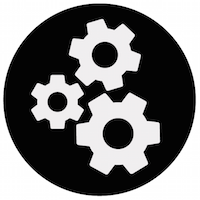Methodology
A key contribution of the toolkit is the methodology we used throughout the process of co-creating the resulting apps and services. Documentation is included in the reports of two separate innovation sprints.
Itinerative Design
The illustration to the right shows the broad vision of the itinerative design methodology. The process begins locally with driver emergent community members not as users or appropriators, but as technological innovators and future-makers. These local driver community innovations are then rippled out and reflected back, first to local experts, cultural commentators and other stakeholders, and then travel further to emergent and “expert” user groups in other regions, taking the ideas and suggestions made by initial innovators to other future-makers for further testing, situating, and enriching.

Each cycle—or segment—of itinerative design, then, begins when the core interaction team visits a driver region community of emergent users to conduct intensive innovation workshops with future-makers, which aim to identify a series of interaction challenges and potential technology interventions. Rapid, in-situ ideation, scenario generation and low-fidelity prototyping are documented before feeding back to local technology experts, NGOs, cultural commentators and other stakeholders for response and refinement.
Next in the process is a series of prototypes of techniques and devices to address the opportunities identified during the initial future-making workshops. These prototypes are iteratively developed and piloted in controlled studies across several different emergent communities, refining and adapting between each iteration. Longitudinal deployments are then undertaken within multiple driver regions; again, interpreting, refining, adapting and situating throughout. Finally, at the end of the process, we look to the global by pivoting to explore how the resultant technologies could be beneficial beyond those communities involved in the design process to “traditional” users.
The overall itinerative design process consists of ten phases:
Phase 1: Preparatory work to select and filter the technology concepts to be used as demonstrators in ideation workshops.
Phase 2: Future-making workshops, which were structured to probe participants’ current use of mobile devices, and their daily routines and activities, followed by exercises to evaluate how the technologies we demonstrated might fit.
Phase 3: Analysis of the data, ideas and insights gathered from the future-making workshop sessions, using these to create concept designs and potential scenarios of use




Phase 4: A summit event with local technology experts, NGOs and other stakeholders to test and challenge the designs.
Phase 5: Ideas from summit and analysis reflected back to emergent communities for further discussion.
Phase 6: Creating a basic working prototype of the design to demonstrate to participants in each driver region.
Phase 7: Lab studies in each driver region. Between each lab study in each location, prototypes are refined based on ideas and feedback from participants, before looping back into further driver communities for enrichment and enhancement.


Phase 8: Intense development work, creating a deployable version of the prototype system.
Phase 9: Longitudinal deployments with emergent user communities in driver regions, involving both original participants from the future-making workshops and additionally recruited testers. Similar to Phase 7, prototypes are refined, enhanced and enriched between each iteration.
Phase 10: Pivoting back and expanding to wider communities. Typically, this stage involves the release of an open-source toolkit, and a launch event to spur wider adoption.
Additional Resources
Further details of this method can be found in the open-access publication below:
- Beyond 'Yesterday's Tomorrow': Future-Focused Mobile Interaction Design By and For Emergent Users. M. Jones, S. Robinson, J. Pearson, M. Joshi, D. Raju, C. Mbogo, S. Wangari, A. Joshi, E. Cutrell, R. Harper, published in Personal and Ubiquitous Computing, 2016
The reports below provide further detail about the methods employed at each stage of the project:
